New Zealand Couriers' top priority is getting your parcel delivered on time and in great condition.
Our experience tells us that proper packaging and labelling is the best way to avoid damage, delay or additional costs. Parcels can travel a huge distance through our network, passing through many hands and machines, so it's vital you package them well enough to handle a multi-step journey. In the unfortunate event of an item being damaged, we do consider the packaging, and if it's deemed to be insufficient, the claim may be declined.
To make it easier for you, we've compiled some of our top tips when it comes to packaging and labelling.
Download our Packaging and Labelling Guidelines PDF >
1. Choosing your box
Where possible we recommend sending items in boxes as opposed to loose or shrink-wrapped. We strongly recommend protecting goods in retail packaging by placing the retail box in outer packaging or a separate box for transport.
a. Consider strength and durability
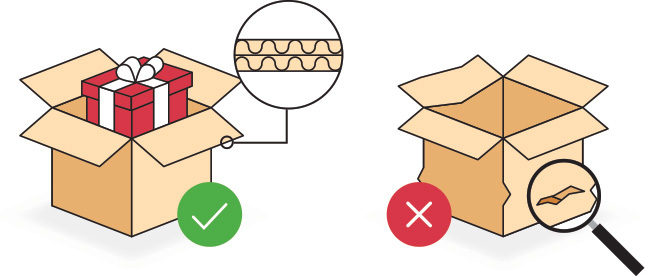
Choose durable boxes made of corrugated cardboard, with their flaps intact, especially when sending heavier items. Re-used boxes lose strength. Check for signs of damage, including creasing to the box sides, tears or dents to the box. Ensure your box is rigid and in good condition.
b. Choose the right sized box
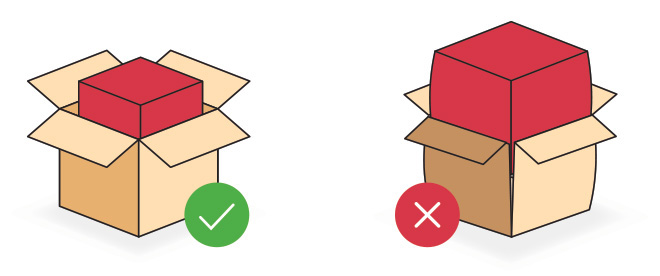
Boxes that are too small to properly fit their contents have a greater chance of splitting in transit and may not provide good protection. Boxes that are too large with too much padding or empty space are likely to collapse if another item is placed on top of it during delivery. If sending poster tubes, use a triangle or square tube holder, not round.
2. Packing your box
Inner packaging
a. Use the right packing materials

Your parcel will be handled multiple times throughout its journey in our network. It is important to use the right inner packing materials to help everything stay safe and prevent items moving inside the box during transit.
b. Remember 5/5
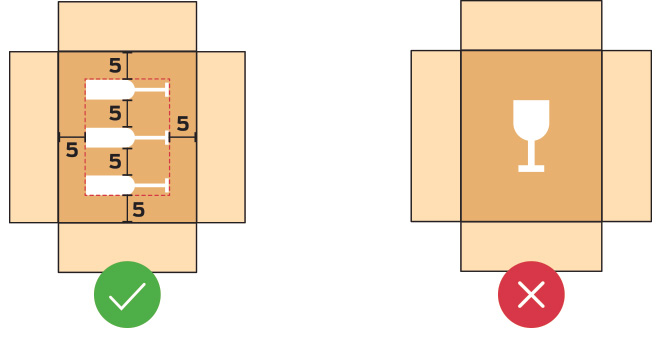
Remember the 5/5 rule for fragile items: 5cm from the walls, base and top of the box and 5cm of cushioning around each individual item.
Irregular shaped items should be packed into boxes and held in place with appropriate packaging materials.
Bubble wrap, shredded paper, corrugated cardboard and polystyrene type products are often ideal forms of internal protection. Wrap all items individually, and make sure there's enough packing material between them to avoid damage. Protect sharp edges with both tape and padding. A heavy item that is not suitably wrapped will move inside the box, can damage the packaging and will be non-conveyable.
3. Seals and labels
Avoid unnecessary delays.
a. Seal your parcel securely

To help prevent boxes coming apart, seal all openings. Boxes should be closed securely using at least three strips of packaging tape on both the top and bottom of the box creating an 'H' seal. Make sure the openings and joins have enough tape to hold them securely closed.
Use strong packaging tape designed for shipping. The sort of packaging tape to use should be a minimum of 4cm in width.
b. Label your parcel with a complete address
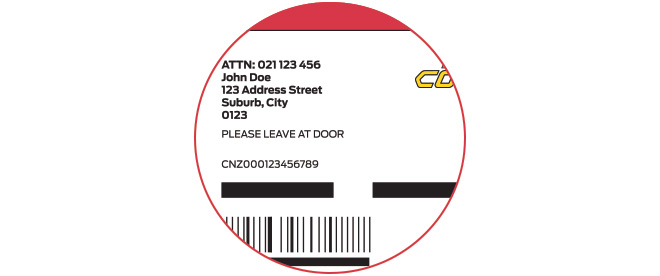
Across New Zealand there are many towns and streets with the same name, which can make delivery difficult if we don't have full address details.
- Include a contact name and phone number (with the area code for landlines).
- Remember it is best to send the parcel to a physical address where someone will be present during the day.
- Include a full return address and phone number on the back of the box, in case it needs to be returned or the sender contacted.
c. Display the address label clearly
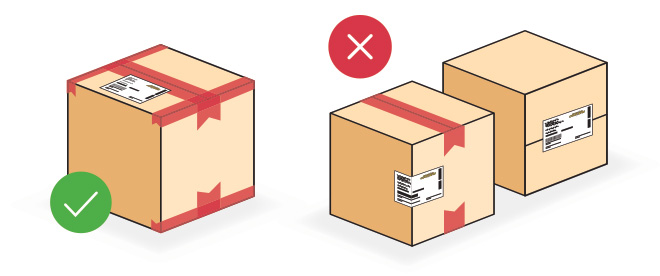
Place the label securely on the top of the box. Make sure the label is visible on one surface and that the label does not cover any openings or corners. If using strapping, ensure it does not cover any part of the label.
d. Remove all old labels and stickers to avoid potential confusion
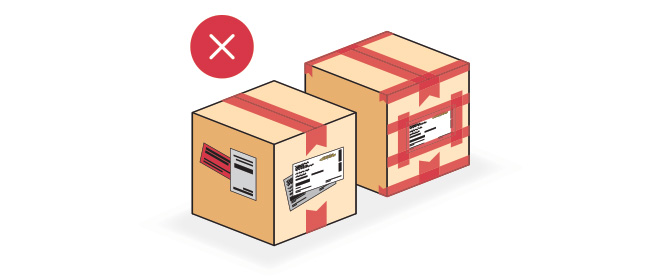
If you need to apply other labels to your box, please avoid placing them on the same surface as the address label.
e. Place a second address label inside the package

This will help us identify your parcel if the original label falls off or becomes damaged.
f. Use a plastic self-adhesive clear window pouch
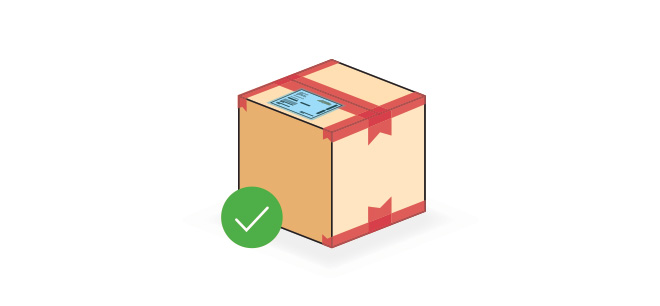
This will hold any loose documents that are required to be placed outside of the box.
Specialty items

Use specialty stickers such as 'fragile', 'heavy' or 'this way up' when required. This will help ensure appropriate transport, handling and storage of your parcel during transit.
Maximum dimensions
The maximum weight New Zealand Couriers accepts is 25kg. 'Caution Heavy Item' stickers need to be applied to any item over 20kg for the safety of our couriers (these are available by contacting 0800 800 841). We recommend a weight limit of 15kg. The maximum length we accept is 1.8m and the maximum volumetric weight is 0.1m³.
What can't be sent?
If you are wanting to send items that are hazardous eg: paints, aerosols and batteries, you must follow New Zealand Couriers Dangerous Goods Policy before it can be accepted for transport.
There are some items that New Zealand Couriers cannot deliver because of the nature of the item. See the details in our Dangerous Goods policy or our list of Prohibited Items.
Express packs
Express packs are a quick and easy option for sending items. If you use our ePacks or soft outer wrappings, you'll need to ensure your item has more protection.
Prevent flat items creasing by placing them between two strong pieces of card, or you can use our DP pack - it's designed to keep documents from bending and is capable of holding up to 150 A4 sheets. Heavier items should be securely wrapped in an inner bag or box in case the outer packaging becomes damaged. Always remember to fully seal your pack.
Any packs used to move items (whether provided by New Zealand Couriers or another supplier) must be strong enough to not split or burst during courier travel (different items will create different pressures on packs – ie sharp edges / corners must be protected so they do not damage the pack).
Please be aware that compostable packs cannot be recycled with class 4 flexible plastics (compostable packs will contaminate recycling feed stock).
You can never be too careful - include the destination address inside too. We recommend not exceeding a weight limit of 15kg. Dangerous goods must not be sent in ePacks.
Ticketing
Please ensure the correct number of prepaid tickets are applied to your parcels based on the destination, size and weight of your item/s. Customers that use manifest or self-labelling ticketing systems should ensure parcels are correctly declared based on the size and/or weight.
Additional underticketing charges may apply if correct tickets or declarations are not supplied. If you require any assistance on how to ticket your freight, please contact your Account Manager.
